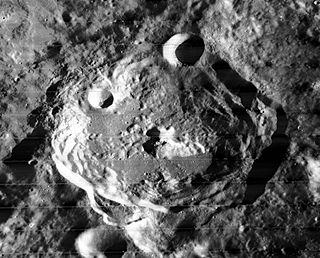
O'Day is a prominent lunar impact crater that is located on the far side of the Moon. It intrudes into the northwestern edge of Mare Ingenii, and the rim is lower on that side. To the northwest is the crater pair of Holetschek and Sierpinski. Southwest of O'Day lies the crater Seidel. It is named in honour of the American physicist Marcus O'Day.

Doppler is a lunar impact crater named for Christian Doppler that is located at the southern edge of the walled plain Korolev, on the far side of the Moon. To the east are the craters Das and Galois. Farther to the southwest of Doppler is Mohorovičić.
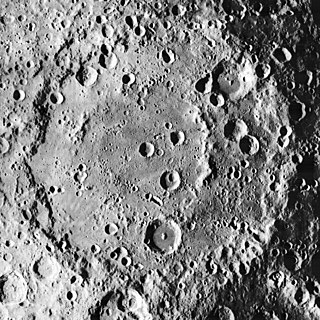
Korolev is a large lunar impact crater of the walled plain or basin type. It is a basin of Nectarian age.

Babbage is an ancient lunar impact crater that is located near the northwest limb of the Moon, named after Charles Babbage. It is attached to the southeastern rim of the prominent crater Pythagoras. The crater remnant named South intrudes into the southeastern floor of Babbage.

Becquerel is a lunar impact crater that lies in the northern hemisphere on the far side of the Moon. This is an ancient and heavily worn formation that is now little more than an irregular buri in the surface. The outer rim has been worn and reshaped until it forms a rugged, mountainous region around the flatter interior.
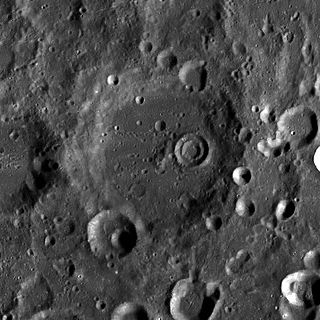
Bell is a lunar impact crater that is located on the far side of the Moon, just past the western limb. It lies in an area of terrain that is marked by many small craters, a number of which are satellite craters of Bell listed in the table below. Bell lies within two crater diameters of Laue to the north, and to the west of the smaller Helberg.

Porter is a lunar impact crater that is located in the southern part of the Moon, and lies across the northeastern rim of the huge walled plain Clavius. Although generally circular, the form of this crater has been modified by the geometry of the surface on which it was formed. The outer rim is generally lower to the southwest, where it lies on the floor of Clavius. Likewise the interior floor is flatter near this face. In contrast the northeastern floor is rougher and more uneven in the northeastern half.

Brouwer is a large lunar impact crater that is located in the southern hemisphere on the far side of the Moon. Intruding into the western rim of Brouwer is the younger and somewhat smaller crater Langmuir. Further to the east-southeast is the larger walled plain Blackett.

Rayleigh is a lunar impact crater, approximately 114 kilometers in diameter, that lies along the northeast limb of the Moon. This feature is seen edge-on from Earth, making it difficult to see much detail. In addition, libration effects can completely hide this crater from view. It lies just to the north of Lyapunov, and to the northwest of the large Joliot. Attached to its southwest rim is the smaller Urey.
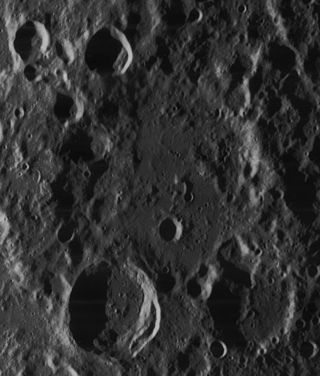
Riemann is a lunar impact crater that is located near the northeastern limb of the Moon, and can just be observed edge-on when libration effects bring it into sight. It lies to the east-northeast of the large walled plain Gauss. To the southeast, beyond sight on the far side, is the crater Vestine.

d'Alembert is a large lunar impact crater located in the northern hemisphere on the far side of the Moon, to the northeast of the somewhat smaller walled plain Campbell. Astride the southwest rim of d'Alembert is Slipher. To the north is the crater Yamamoto, and to the south-southwest lies Langevin. This walled plain has the same diameter as Clavius on the near side, making it one of the largest such formations on the Moon.
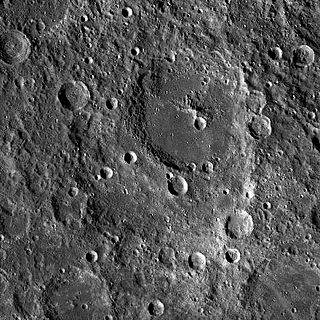
Harkhebi is a large lunar impact crater of the category termed a walled plain, on the far side. Half of the crater to the north-northeast is overlain by the walled plain Fabry, a large formation in its own right. Attached to the northwestern rim is the much smaller crater Vashakidze. To the southwest lies Vestine, and to the south is Richardson.

Chevallier is a lunar impact crater that is located in the northeastern part of the Moon's near side, about a crater diameter east-southeast of the prominent crater Atlas. To the south-southeast of Chevallier is the flooded crater Shuckburgh. Chevallier was named by the IAU in 1935.
Cooper is a lunar impact crater that is located in the northern hemisphere on the far side of the Moon. It lies to the east of the large walled plain D'Alembert, and west-southwest of the crater Chappell.

Mason is the remains of a lunar impact crater that lies in the northeastern part of the Moon. It is nearly attached to the eastern rim of the flooded crater Plana, and southeast of Bürg. Along the northern rim of Mason is the southern edge of the Lacus Mortis, a small lunar mare. To the south is the larger Lacus Somniorum.

Schumacher is a lunar impact crater that lies in the northeast part of the Moon, just to the north of the larger walled plain Messala. It was named by the IAU in 1935.

Gibbs is a lunar impact crater that lies near the eastern limb of the Moon. It is situated less than a crater diameter to the northeast of the larger crater Hecataeus. The crater chain Catena Humboldt passes to the south of Gibbs, following a line to the northeast. Due to its proximity to the limb, this crater appears foreshortened when viewed from the Earth, and visibility is subject to libration.
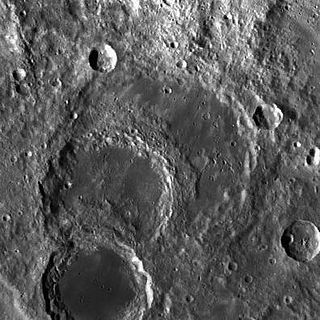
Richardson is a large lunar impact crater located on the Moon's far side, just behind the eastern limb. It lies to the south of the huge walled plain Harkhebi, and to the east-southeast of the crater Vestine. Just to the northeast is Szilard, and to the southeast is Artamonov.

Szilard is a damaged lunar impact crater that lies to the east-northeast of the crater Richardson. It is named after Leó Szilárd, the scientist who theorised nuclear chain reactions and famously worked on the atomic bomb during World War II. About a half-crater-diameter to the northwest is the large walled plain Harkhebi. Between Harkhebi and Szilard is the small Giordano Bruno. The ray system from this impact forms streaks across the rim and interior of Szilard.

Vestine is a heavily eroded impact crater on the Moon's far side, just beyond the northeastern limb. It lies to the southwest of the large walled plain Harkhebi, and to the northwest of the Maxwell–Richardson crater pair.






















